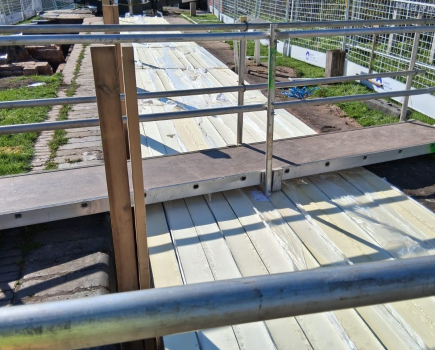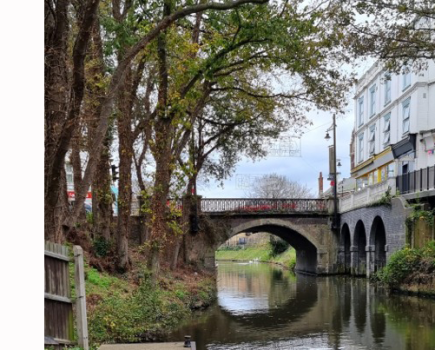Heating a boat can be notoriously tricky, but get the plumbing right and it’s a lot simpler

How often do you hear, “My boat takes hours to warm up”, “My saloon’s hot but my bedroom’s cold”, “My boat’s too cold” or “My boat’s too hot, my feet are always cold!”. All of those complaints are usually down to your plumbing not being quite right.
So to clear up some of the confusion around the pipes, here’s a guide to making sure your boat and heating system is plumbed correctly so your boat will warm up faster with a more even heat spread.
Narrowboats normally use the same components for plumbing as you would find in a typical modern household system, but a boat shouldn’t be treated the same. You don’t have a large, variable speed 240v water pump, clean burning gas for fuel or large volumes of coolant.
Taking this into consideration, it’s probably easiest to break it all down by looking at a typical narrowboat layout (illustration above) and examine each part in detail to find any glitches in your system.

1. Diesel-fired heater connected to a basic coolant circuit with the hot flow pipes shown in red and the cooler return pipes in blue.
2. Optional service valves. If fitted they will enable a much faster, easier removal and replacement of a heater without introducing air into the system. This can cut service labour costs considerably as the system will not require draining – it can be quickly bled from the heater’s bleed screw without the need to re-bleed the whole system.

3. Twin pipe header tank with the return flow passing through it. Why two pipes?
a) To act as a permanent auto bleed in the system, any air returning to the heater must come out in the header tank.
b) To mix any antifreeze added to the system. Neat antifreeze will not mix in a single pipe header tank.
c) The header tank will add a more coolant volume to the system. This makes the heater work for a little longer to heat this extra volume, but once the heater reaches temperature and shuts down, the coolant pump will continue to run. This extra volume keeps the heater off for a little longer too. This can help soften out any rapid short-cycling.
If you have an open header tank you are introducing oxygen into your coolant and this will degrade the antifreeze much faster. If you have a self-filling header tank, check your antifreeze consistency on a regular basis.

4. Domestic hot water tank (calorifier), usually one of the first components in the system. It’s commonly believed the more flow you put through a calorifier from the heating circuit, the faster it will heat up.
Sadly, this is rarely the case. Most common, narrowboat calorifiers (55 to 75ltr) will generally have a very basic copper coil inside, capable of transmitting approximately 1 to 1.5kW of heat energy into the domestic hot water. So passing 75% of your available flow rate through the calorifier is fairly pointless. If too much flow is going through the calorifier circuit it can adversely affect the heater.
Once the calorifier is up to temperature the coolant from the heater can return hot enough to shut the heater down, only then to have the coolant coming back from the radiators start it up again.
Most boats I look at have no balance valve, or if they have, it’s wide open. As all the heat and pump pressure is at the back of the system, approximately 75% of the heated coolant will be going through the calorifier and back to the heater, leaving just 25% to heat the rest of the boat.
If the system is balanced properly, you will usually end up with 10 to 25% of your hot coolant going through the calorifier and 90 to 75% heating your boat. Your hot water won’t take any longer to heat than it ever has but your boat will heat up a lot quicker (presuming your radiators are big enough, of course).
If this is hard to believe, bear in mind you will only normally have a 1 to 1.5kW 240v immersion element and that heats the water quick enough, doesn’t it?
Tip: Don’t be tempted to put the flow directly through the calorifier – it will ruin the flow rate for the rest of the system and take longer to heat the boat up from cold. It may force the heater to run in low power mode before it should. Don’t take the calorifier into account when working out your heater size, once it’s up to temperature, it’s out of the equation.

5. Isolation valve. Do I need one? Yes. Unfortunately, many boats out there don’t have one fitted, or if they do it’s normally wide open, but without one you can’t balance your calorifier. Worth every penny of the £2 or £3 cost.
6. Lockshield valve, used to balance the flow through each radiator. Once set, they should be tamper-proof. A little tweak on one radiator can ruin the flow through all the others. Bear in mind you have two flow anomalies going on in a typical narrowboat pipe layout. At the heater end of the system you have the pump pressure and at the far end of the system you will have flow pressure, so don’t be afraid of restricting the flow through the last radiator in the system, too.
Remember, you can’t balance the system if someone has joined the flow and return pipe under the radiator (Figure 2).

7. Radiator. Sounds simple doesn’t it? But there is much to talk about here, in fact, as far as narrowboat heating goes this is a vast and complex subject. Whether you have radiators, convectors, finrads (skirting radiators), underfloor heating, blown air matrix units or any such combination, the main criteria for the heater is that at least 2.5kW of heat energy is removed from the heater as the boat is being warmed and as an owner you will want fast, even heat. Often, we see neither of these scenarios. The complaints above are all issues caused by radiator size, type and layout.
Tip: Have enough radiators to do the job. Don’t be afraid of putting larger or more efficient radiators in your boat. For example, on a 58ft boat if you put 5kW of radiators on a 4kW heater, you are still putting 4kW into a boat that only needs 3kW.
Radiators will give a more comfortable heat than convectors in a confined space. Radiators and convectors should be fitted as low as practically possible to the floor.
Finrads should be used with caution. Single pipe finrads can’t be zone controlled so if it gets hot in your saloon, for example, you will have to switch the heater off. Twin pipe finrads should only have the flow pipe going through them to get full efficiency. Finrads can be complex to plumb in and control to achieve an even spread of heat throughout the boat.
Blown air matrix units should be considered if the boat layout does not allow for enough radiators, the galley for example. If the boat is only used on an occasional basis, blown air matrix units will warm the air quickly and give perceived heat while waiting for the radiators to bring the fabric heat of the boat up to temperature.
Underfloor heating works well in widebeams but it can be hard to find enough floor space in a narrowboat. In both cases, sleeping cabins will normally require some form of supplementary heating such as a radiator or matrix unit.
It’s worth remembering that if a radiator manufacturer states his radiator puts out 1kW of heat energy then it should have been tested to an industry standard with a set flow temperature at a set room temperature and a defined flow and return temperature across the radiator. You should subtract 10% off a radiator’s stated output to allow for a typical diesel heater’s working temperatures and flow rates. So if you think you have 3kW worth of radiators on your boat, you may only be getting 2.7kW from them.
Tip: If you fit convector radiators these should be within 150mm (6in) of the floor to stop the cold feet, hot head syndrome. If you have high plinths, stick to radiators rather than convectors if you want warmer feet.

8. Thermostatic radiator valve (TRV). Again a fairly long subject, but basically, fitting TRVs will achieve a more even heat throughout your boat than you would get with manual valves or a room thermostat.
Fitting TRVs may make the heater short-cycle for short periods of time now and then. Some manufacturers recommend you don’t fit TRVs for this reason, but this is relatively old thinking and goes back to the days of high sulphur gas oil (red diesel). Now everyone is using ultra low sulphur gas oil, short bouts of short-cycling should not harm the heater and the tiny amount of extra current used from the batteries is a small price to pay for a boat that feels comfortable from front to back.
Fitting a room thermostat for temperature control in a narrowboat rarely works well and there is no ideal place to fit one that will monitor both ends of the boat at once. If you light the log burner for effect, a TRV will shut the saloon radiator or if you start cooking, a TRV will shut the galley radiator while still heating the companionway or bedrooms.
9. Towel rail. Fit lockshield valves to a small radiator or towel rail and set them both to fully open. This, combined with the calorifier loop, will give you a by-pass circuit for when all the radiator valves are shut.
10. Pipework. Basically, pipework must be a minimum of 22mm from the heater to the last component in the system, go through the last radiator or component, regardless of any valves or TRVs. A common mistake is to run the pipework under the last radiator and return to the heater, leaving you with a system that is virtually impossible to balance. Seventy percent of your hot water will be rushing around the flow and return pipe as that will be the path of least resistance.
If pipework is required down both sides of the boat, use the two last radiators or components as returns.
Tip: Flow rate is paramount to getting the best out of your heater and system. Don’t fit too many elbow fittings in the pipework, always use swept bends where possible. Oddly, when balancing your system don’t be afraid of restricting the flow through the last radiator. Because of the pipe layout in a typical narrowboat, it is normally the middle radiators that suffer from lack of flow, not the beginning and end ones.
If your last radiator has been plumbed properly, you will be able to slow the flow down and force more water through the middle radiators. Always keep the plumbing side as simple as possible, have one main flow and return in 22mm pipe and tee all the components off in 15mm.
This is just scratching the surface of narrowboat heating, but it should give you a few pointers if your boat is not heating as you would expect.
Thanks to Peter Collard, Engineering Project Manager at Eberspächer.
_____________________
You may also like:
10 ways to beat the winter weather
Why winter may be the perfect time to go cruising
Steve Haywood: boating in autumn and winter
Image(s) provided by:
Archant







